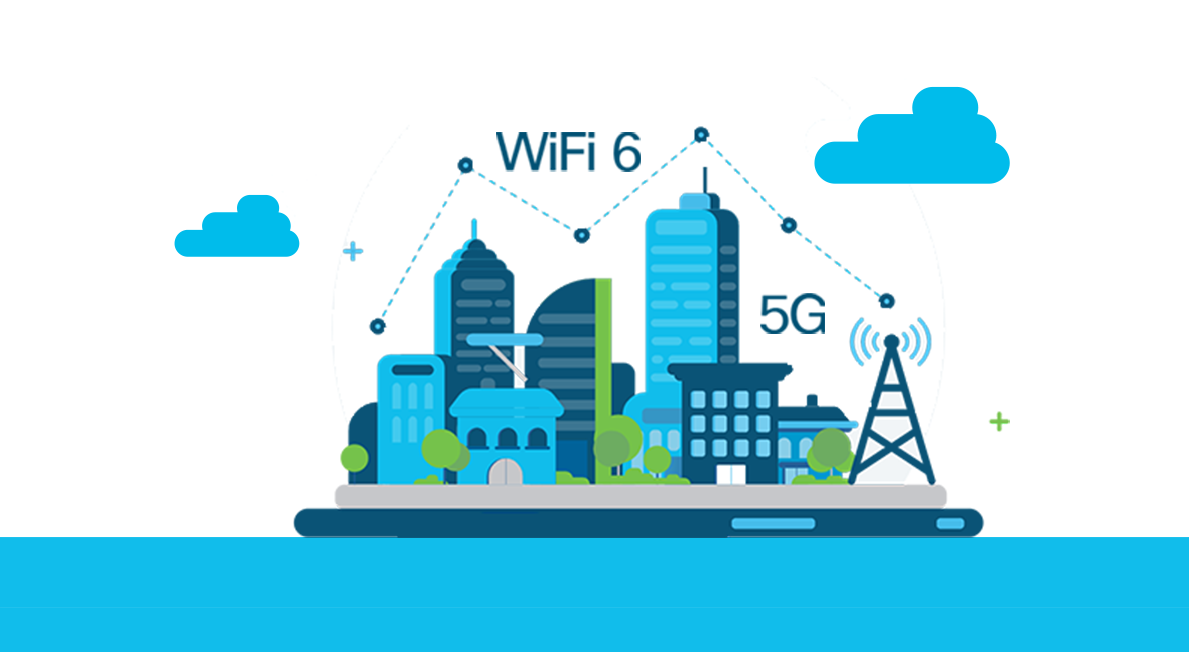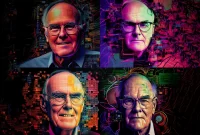What is the difference between Wi-Fi and 5G and why do we need both?
It’s been 5 years since the beginning of the 5G era, and while this technology, unlike Wi-Fi, has not yet made the fundamental changes that were expected in mobile networks, we will probably see such sweeping changes in the next few years.
5G technology is currently better than 4G but has only made slight improvements in download speed . However, the technology is expected to significantly increase download speeds and reduce data latency in the future.
When we compare 5G and WiFi technologies, all indications are that we will need both technologies to make the most of the Internet of the future. While 5G has many applications in many situations, WiFi technology also helps us in different situations.
Therefore, it is not unlikely that in the future we will see the integration of these two technologies to promote wireless internet, because 5G home internet now uses such a combination.
The difference between WiFi and 5G
5G is simply the name of the fifth generation of cellular network technology, which includes several elements. Cellular or mobile networks use licensed bands that are sold at auction to operators such as Verizon and AT&T.
To cover areas, these operators create a network of interconnected stations that generate a strong signal and provide the Internet to thousands of users in urban areas. These operators charge users a subscription fee to expand their Internet infrastructure and, of course, their return on investment.
WiFi technology, on the other hand, uses unlicensed bands that are free for everyone to use but have a relatively weak signal. Users pay Internet service providers (ISPs) to access this type of Internet and also use routers.
Using the same bandwidth as other residents in the area, especially in areas with limited bandwidth, can cause a lot of hassle for users.
WiFi technology uses two frequencies, 2.4 GHz and 5 GHz. The maximum frequency of 2.4 GHz is lower than the frequency of 5 GHz, but its coverage area is much wider. Many of us use Wi-Fi in our daily lives at home and at work, and rely on mobile Internet outdoors.
Fortunately, today’s smartphones automatically switch between Wi-Fi and mobile networks without our attention, and in fact the main thing is to have a strong connection at all times. This scenario has not changed with the introduction of 5G technology, and only the performance of networks has improved.
The future of 5G
The promise of download speeds of 1 to 10 Gbps and latency or upload speeds of 1 millisecond gives users hope for 5G networks. Such a speed is comparable to the performance of physical wired networks, but the fact is that there is still a long way to go to reach the maximum speed provided by 5G.
The development of this technology depends not only on WiFi but also on other cellular technologies such as 4G LTE, which increases the likelihood of advancing similar cellular technologies.
The actual speed of 5G internet depends on several factors including geographical location, network used, number of users of a network and devices connected to it. The main goal of this technology is to achieve a minimum download speed of 50 Mbps and a upload speed of 10 Mbps, which is a significant improvement over the current average speeds.
According to Speedcheck, the average download speed is currently 57 Mbps, so the current minimum speed is much lower than that.
The future of 6G
Wi-Fi technology used to be known as 802.11b, 802.11a, 802.11g, 802.11n and 802.11ac, which was very confusing. So the WI-FI Alliance decided to use the name WiFi 6 instead of 802.11ax. This template is also used in other versions of WiFi, for example 802.11ac is known as WiFi 5.
The new standard WiFi 6 is up to four times faster than WiFi 5 in certain circumstances and theoretically reaches a speed of 9.6 GHz. The technology has also made advances in capacity, allowing multiple devices to be connected without compromising quality.
Which devices use 5G and WiFi 6?
Many newer devices now support both 6 and 5G WiFi technology. Many countries use 5G networks below 6 GHz and will continue to do so in the future . However, to access 6G technology, you will first need a router and smartphone or other device that supports this technology. Most smartphones and computers are expected to support this technology in the next few years.
The future of the Internet
With the increasing production of routers equipped with WiFi 6 and the expansion of 5G telecommunication towers, the speed of our home and mobile internet will increase and its latency will also decrease.
More 5G technologies and handsets will also be available in the future. Just as 4G technology has evolved in areas such as mobile online games, 5G technology will create new applications such as the connected vehicle system.
It is not clear at this time exactly what wireless internet will look like in the future, but expect to hear the name 5G and WiFi 6 in the next few years. We will certainly see an increase in wireless internet speed in the future, and it is unlikely that there will be much time left until such a future.
What do you think about 5G and WiFi 6 technologies? How many years do you think we will see the full use of these technologies? Share your comments with us. On October 29, 1969, a message was sent from an indescribable room at UCLA in Southern California to a computer at the Stanford Research Institute in Menlopark, California. This message was “Lo”; Because the computer crashed before completing its task and could not send the full login word. However, this was the first message sent through computers connected to the ARPANET network; The network that later became the phenomenon we know today as the Internet.
In the last five decades, the Internet has transformed human life. From our payments to our laughter, the Internet has incredibly shaped and penetrated our lives in a very short time.
After all, have you ever wondered what our digital world will look like in the next 50 years? How do we overcome the current privacy and data protection issues? Should we be optimistic or afraid of our changing digital world?



